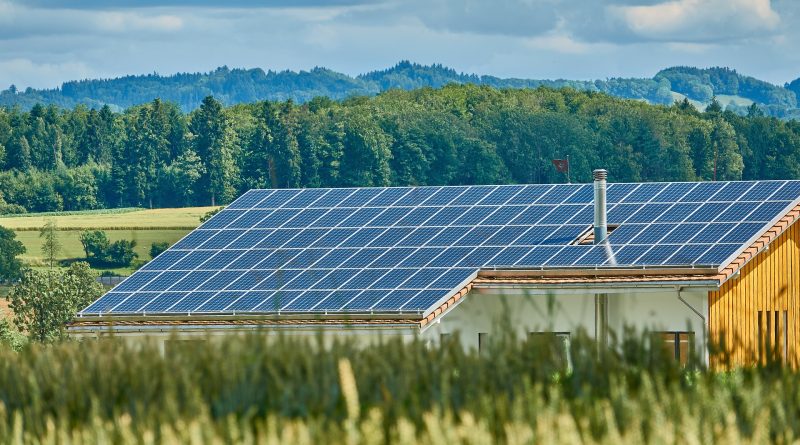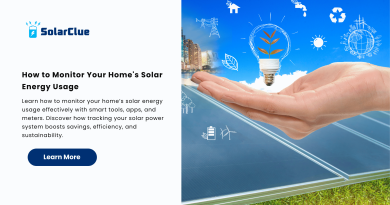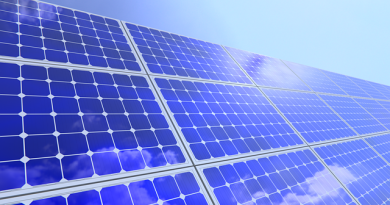Grid Tied Solar System – Affordable Energy Solutions
Solar energy is gaining momentum as a sustainable and clean source of power. With environmental concerns and rising electricity costs, more and more people are turning to harnessing the power of the sun for their energy needs. One popular option is the on-grid solar system, where solar panels are connected to the main power grid. In this blog, we will delve deeper into the on-grid solar system, explaining how it works, its benefits, and considerations when considering installing one.
Table of Contents
What is an On-Grid Solar System?
An on-grid solar system, also known as a grid-tied or grid-connected system, is designed to work in conjunction with the main power grid. It consists of photovoltaic (PV) panels, an inverter, and a net energy meter. These components work together to convert sunlight into usable electricity, which can be consumed within the property and any excess can be sent back to the grid.
How Does it Work?
When the sun shines on the PV panels, they convert the sunlight into direct current (DC) electricity. The inverter then converts this DC electricity into alternating current (AC) electricity which can be used by household appliances. The AC electricity can either be consumed directly or sent to the main grid.
During periods of excess production, such as sunny days when energy demand is low, the surplus electricity generated by the on-grid solar system is sent back to the main power grid. The net energy meter records the amount of electricity sent to the grid, allowing homeowners to receive credits for the excess electricity produced. These credits can be used to offset electricity consumption during times of high demand or darkness when the solar panels are not producing energy.
The Benefits of an On-Grid Solar System
There are several benefits to installing an on-grid solar system:
1. Reduced Electricity Bills: By generating your own electricity, you can significantly reduce your monthly electricity bills. The excess energy produced during the day can offset the electricity consumed at night, resulting in substantial savings over time.
2. Financial Incentives: Many countries and regions provide financial incentives such as tax credits, feed-in tariffs, and rebates to encourage the adoption of renewable energy systems. These incentives can further offset the cost of installing an on-grid solar system.
3. Environmental Sustainability: Solar energy is clean and renewable, producing no harmful greenhouse gas emissions. By switching to solar power, you can significantly reduce your carbon footprint and contribute to a cleaner planet.
4. Reliability: On-grid solar systems are reliable as they are connected to the main power grid. This means that during periods of low sunlight or high energy demand, you can still access electricity from the main grid.
5. Scalability: On-grid solar systems can be easily expanded by adding more solar panels. If your energy needs increase, you can simply install additional panels to generate more electricity.
6. Return on Investment: Installing an on-grid solar system is an investment that pays off over time. The savings on electricity bills, financial incentives, and the potential to earn credits by selling excess electricity can lead to a compelling return on investment.
Considerations when Installing an On-Grid Solar System
Before installing an on-grid solar system, there are a few factors to consider:
1. Available Roof Space: Consider the available roof space for installing solar panels. Ideally, roofs should have ample sunlight exposure and minimal shading from trees or nearby buildings.
2. System Size: Determine your energy consumption to estimate the appropriate system size. This will depend on factors such as the number of occupants, energy-efficient appliances, and your daily electricity usage.
3. Local Regulations: Research the local regulations and permits required for installing on-grid solar systems. Some areas may have specific guidelines or restrictions on installation.
4. Orientation and Tilt: The orientation and tilt of the solar panels play a crucial role in maximizing energy generation. Ideally, solar panels should face south or southwest and have an optimal tilt angle based on your location.
5. Maintenance: Although on-grid solar systems require minimal maintenance, regular cleaning of the panels and periodic inspection of the system is recommended to ensure optimal performance.
Conclusion
Elevate your living with SolarClue®’s grid-tied solar systems—the epitome of affordable and sustainable energy solutions. Seamlessly connected to the utility grid, these systems not only reduce your reliance on conventional power sources but also contribute to significant cost savings. Homeowners benefit from lower bills and potential credits through net metering, while businesses can cut operational costs and embrace a sustainable energy model. With transparent quotes, efficient installations, and advanced monitoring solutions, SolarClue® ensures a seamless transition to clean energy. Contact us today and embark on a journey towards affordable, efficient, and sustainable living with grid-tied solar solutions.
A grid-tied system is connected to the utility grid, allowing the exchange of electricity. During sunlight, excess power is sent to the grid, reducing reliance on conventional sources.
Homeowners can reduce their electricity bills by generating their own power and potentially earning credits through net metering when excess electricity is sent to the grid.
Installation times vary but are generally efficient. SolarClue® ensures prompt and professional installations for a seamless transition to clean energy.
Absolutely. Businesses can significantly reduce operational costs by generating their own power and contributing to a sustainable energy model.
System capacity, brand, installation complexity, and additional components influence costs. SolarClue® provides transparent quotes based on individual needs.
Yes, SolarClue® guides users to maximize benefits from available government incentives, enhancing the financial appeal of grid-tied systems.
SolarClue® offers advanced monitoring solutions, empowering users to track and optimize system performance remotely for increased efficiency.
Certainly. SolarClue® provides tailored solutions for both residential and commercial spaces, ensuring efficient energy production aligned with diverse requirements.
Net metering allows users to receive credits for surplus electricity sent back to the grid, potentially reducing future utility bills.
By reducing dependence on conventional power sources, grid-tied systems contribute to sustainable living, fostering a cleaner and more eco-friendly environment.





I am interested
Sir, please share your details so our representative will contact you.